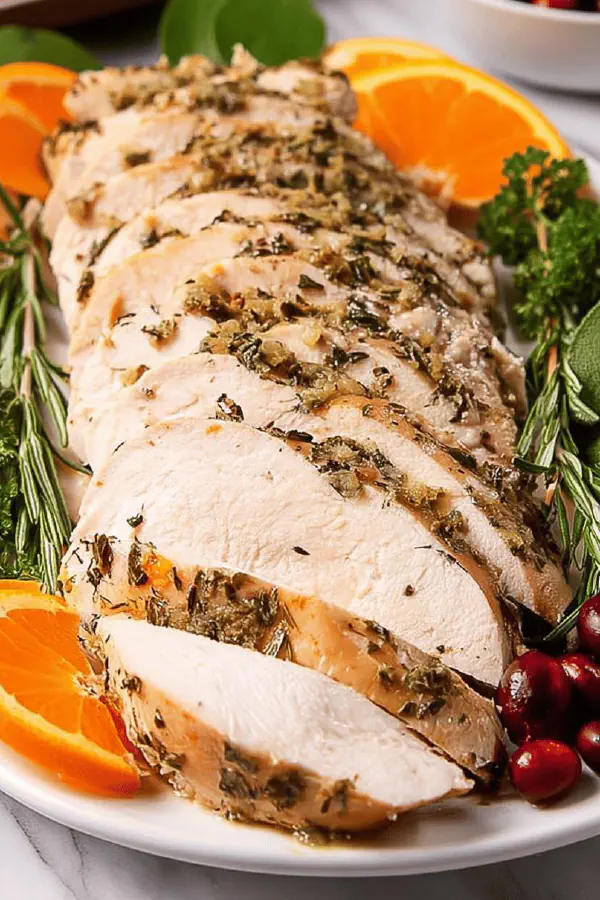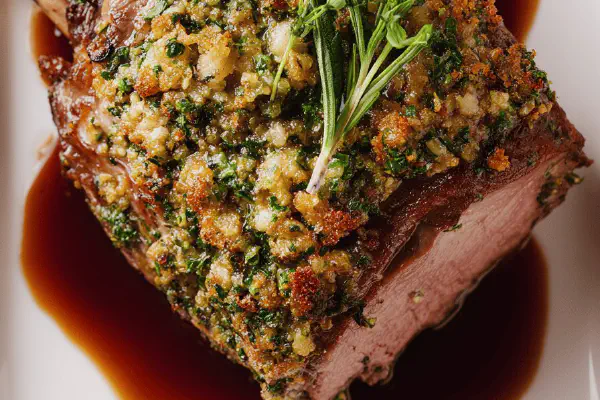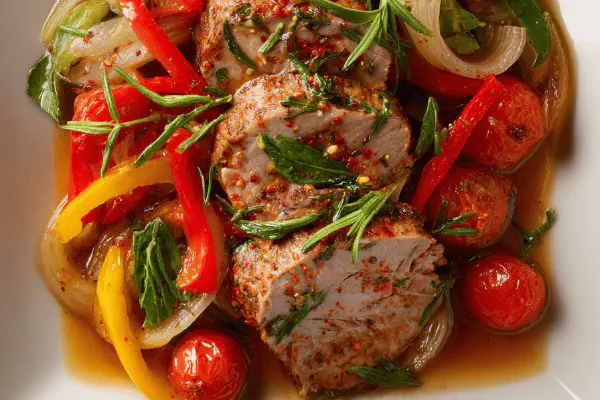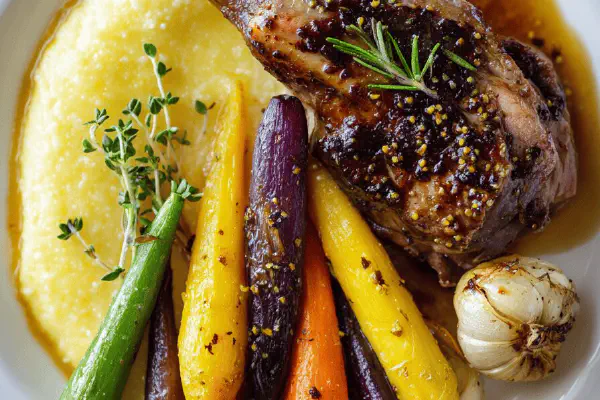Featured Recipe
Roast Turkey Breast Twist

By Kate
"
Oven-roasted turkey breast coated in a creamy herbed spread with oregano and tarragon replacing rosemary and parsley. Mayo base swapped with Greek yogurt for tang and moisture retention. Roasted uncovered to create a crisp top but tented if browning too fast. Seasoned simply with salt and pepper, baked at moderate heat to keep juices locked in. Uses tactile and temperature cues over strict timing; resting is essential to redistribute juices. Practical notes on substitutions, avoiding dryness, and sensory signs to pull from oven for best results.
"
Prep:
15 min
Cook:
90 min
Total:
105 min
Serves:
3 servings
turkey
roast
dinner
herbs
easy meal
Introduction
Roasting a turkey breast is deceptively simple but making it juicy and flavorful requires more than just heat and time. Mayo works well to keep moisture, but swapping in Greek yogurt adds tang and protein without sacrificing creaminess. Herbs like oregano and tarragon bring unexpected depth while sage and thyme keep things grounded. Watching the skin color—gleaming golden or burnt spots—tells you exactly when to shield with foil. Resting is non-negotiable; rushed cuts equal dry bites. Every step teaches something about moisture control and heat interaction. No fluff, just what works in real kitchens. Expect crackly skin, fresh herb aroma, and meat that whispers ’not overcooked.'
Ingredients
About the ingredients
Greek yogurt replaces mayonnaise, lending acidity that tenderizes and adds brightness but watch for curdling if oven runs hot. Oregano and tarragon swap in for rosemary and parsley adding pine and anise notes—play with herb combos depending on preference. Using skin-on breast shields meat during roasting and crisps nicely if dry before cooking. Fine sea salt is critical—not just for flavor, but to aid moisture retention and texture. Black pepper freshly cracked gives a fresh kick without bitterness. Olive oil drizzle before roasting optional—adds crispness but not necessary if topping with herbed yogurt.
Method
Technique Tips
Preheat to a moderate 340°F to gently render fat and cook meat evenly. Whisking yogurt with dried herbs ensures even distribution; fresh herbs can be used but need more quantity and moisture control. Dry turkey skin meticulously to prevent steaming and reigning in sogginess critical. Season thoroughly including under skin if you can loosen it carefully—direct seasoning seals in aroma and flavor. Keep an eye on color and listen for the faint sizzle; it’s your fast feedback. Use instant-read thermometer at thickest point rather than relying on time stamps which vary by oven and turkey size. Once target temp hits, rest covered loosely with foil to trap residual heat and let fibers relax—skip this if you want dry meat. Slice against grain in even slices for pleasing texture and mouthfeel.
Chef's Notes
- 💡 Keep skin dry. Wet turkey? Steaming happens. No one wants soggy skin. Use paper towels thoroughly. Crispy skin results from no moisture.
- 💡 Consider Greek yogurt substitutes. Not just mayo, but it can curdle if oven temp high. Watch carefully. If browning, lower heat could help.
- 💡 Resting is non-negotiable. Let turkey chill for at least 10 mins. Juices redistribute. Slicing too soon means dry bites—avoid it.
- 💡 Listen for sounds. Gentle sizzling means heat balance. Too strong—means possible burning. Too quiet—temperature dropping. Adjust as needed.
- 💡 Watch color. Golden brown good, dark spots not so much. Use foil to shield. It helps avoid burnt edges while allowing browning.
Kitchen Wisdom
How long to cook turkey?
Depends on size. Thicker parts need more time. Use thermometer, not strict timer. Temp key.
Can I use fresh herbs instead of dried?
Yes. Increase amount. Fresh herbs have more moisture. Must control that carefully.
Why is my turkey dry?
Under-cooked can dry out too. Watch resting time. Too rushed? Big problem. Juices need time to settle.
Storage options for leftovers?
Keep in airtight container. Use within 3-4 days. Freeze for longer. Thaw properly before reheating.



